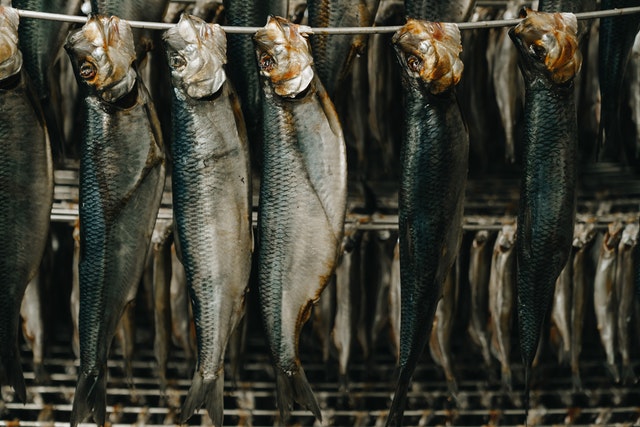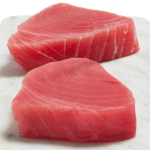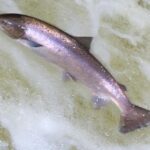As a dog owner, you understand the importance of providing your furry friend with a balanced and nutritious diet. While traditional dog food is a popular choice, many pet owners are turning to alternative sources of protein, such as seafood. But can dogs safely eat seafood? This is a question that has sparked debate amongst pet owners and veterinarians alike. While some types of seafood are safe and even beneficial for dogs, others can be toxic and potentially deadly.
In this comprehensive guide, we’ll dive into the world of seafood and explore the dos and don’ts of feeding your dog. From salmon to shrimp, we’ll cover everything you need to know to make informed decisions about your dog’s diet. So let’s get started and ensure that best friend is getting the best possible nutrition!
Types of Seafood Safe for Dogs to Eat
When it comes to feeding seafood to your pooch, not all types are created equal. Some seafood is safe and even beneficial for dogs, while others can be toxic and potentially deadly. Here are some types of seafood that are safe for dogs to eat:
Salmon
Salmon is a great source of Omega-3 fatty acids (healthy fats). This can help promote healthy skin and a shiny coat in dogs. It is also a good source of protein and Vitamin B12. However, it is important to note that not all salmon is created equal. Raw or undercooked salmon can contain a parasite called Neorickettsia helminthoeca, which can cause salmon poisoning disease in dogs. Symptoms of this disease can include vomiting, diarrhea, fever, and lethargy. To avoid this, make sure to cook the salmon thoroughly before feeding it to your dog.
Shrimp is a low-calorie, high-protein food that is safe for dogs to eat. It is also a good source of Vitamin B12 and phosphorus, which can help support your dog’s immune system and bone health. However, it is important to remove the shell and tail before feeding shrimp to your dog, as they can be a choking hazard.
Tuna
Tuna is also a good source of protein and Omega-3 fatty acids (healthy fats), which can help support your dog’s immune system and promote healthy skin and coat. However, it is important to note that tuna contains high levels of mercury, which can be toxic to dogs if consumed in large amounts. To avoid this, limit your dog’s intake of tuna to small amounts and make sure to choose low-mercury options.
Nutritional Benefits of Feeding Your Dog Seafood
Feeding your dog seafood can provide a range of nutritional benefits. Seafood is a great source of protein, which is essential for building and repairing tissue in the body. It is also rich in Omega-3 fatty acids, which can help promote healthy skin and coat, reduce inflammation, and support your dog’s immune system. Additionally, seafood is a good source of vitamins and minerals, such as Vitamin B12, phosphorus, and selenium, which can help support your dog’s overall health and wellbeing.
Risks and Precautions to Consider When Feeding Your Dog Seafood
While seafood can provide a range of nutritional benefits for your furry friend, there are also some risks and precautions to consider. Here are some things to keep in mind when feeding your dog seafood:
Allergies
Just like humans, dogs can be allergic to certain types of seafood. Common symptoms of seafood allergies in dogs include itching, hives, and swelling. In severe cases, an allergic reaction can cause difficulty breathing and even anaphylaxis. If you suspect that your dog may be allergic to seafood, stop feeding it to them and consult with your veterinarian.
Bones and Shells
Seafood can contain bones and shells, which can be a choking hazard for dogs. Make sure to remove any bones or shells before feeding seafood to your furry friend.
Contamination
Seafood can also be contaminated with harmful bacteria, parasites, and toxins. To avoid this, make sure to purchase seafood from a reputable source and cook it thoroughly before feeding it to your dog.
Mercury
As mentioned earlier, some types of seafood contain high levels of mercury, which can be toxic to dogs if consumed in large amounts. To avoid this, limit your dog’s intake of high-mercury seafood and choose low-mercury options instead.
How to Prepare Seafood for Your Dog
When preparing seafood for your furry friend, it is important to cook it thoroughly to avoid the risk of bacterial contamination and to remove any bones or shells. Here are some tips for preparing seafood for your dog:
Cooking Methods
Seafood can be cooked in a variety of ways, including grilling, baking, and boiling. Make sure to cook the seafood thoroughly to an internal temperature of 145°F to kill any harmful bacteria.
Seasoning
Avoid adding any seasoning or spices to the seafood when preparing it for your dog, as these can be harmful to their health.
Serving Size
When feeding your dog seafood, make sure to give them a small amount at first to make sure that they tolerate it well. As a general rule of thumb, seafood should make up no more than 10% of your dog’s diet.
Serving Sizes and Frequency
When it comes to feeding your furry friend seafood, it is important to keep serving sizes and frequency in mind. While seafood can provide a range of nutritional benefits for your dog, it should only make up a small portion of their overall diet. As a general rule of thumb, seafood should make up no more than 10% of your dog’s diet. Additionally, the frequency of feeding seafood to your dog will depend on their individual nutritional needs and any health issues they may have. Consult with your veterinarian to determine the best feeding plan for your furry friend.
Symptoms of Seafood Allergies in Dogs
As mentioned earlier, dogs can be allergic to certain types of seafood. Common symptoms of seafood allergies in dogs include itching, hives, and swelling. In severe cases, an allergic reaction can cause difficulty breathing and even anaphylaxis. If you suspect that your dog may be allergic to seafood, stop feeding it to them and consult with your veterinarian.
Alternatives to Seafood for Dogs
If you prefer not to feed your dog seafood, there are plenty of alternative sources of protein and nutrition available. Some options include:
Chicken
Chicken is a great source of protein and is easy to digest for most dogs. It is also a good source of Vitamin B6 and phosphorus.
Beef
Beef is a good source of protein and is rich in iron, zinc, and Vitamin B12.
Lamb
Lamb is a good source of protein and is often recommended for dogs with food sensitivities.
Vegetables such as carrots, green beans, and sweet potatoes can be a great source of vitamins and minerals for your furry friend.
Frequently Asked Questions About Feeding Dogs Seafood
Can dogs eat raw seafood?
Raw seafood can contain harmful bacteria and parasites that can be dangerous for dogs. It is recommended to cook seafood thoroughly before feeding it to your furry friend.
Can dogs eat shellfish?
Shellfish such as shrimp and crab are safe for dogs to eat, as long as the shell is removed to avoid the risk of choking.
Can dogs eat tuna?
Tuna is safe for dogs to eat in small amounts, but it is important to choose low-mercury options to avoid the risk of mercury toxicity.
Can dogs eat salmon?
Salmon is safe for dogs to eat as long as it is cooked thoroughly to avoid the risk of salmon poisoning disease.
Can dogs eat sushi?
Sushi should be avoided when feeding your dog, as it often contains raw seafood that can be dangerous for dogs.
Conclusion – can dogs eat seafood
Feeding your dog seafood can provide a range of nutritional benefits, but it is important to choose the right types and prepare them properly to avoid any potential risks.
By following the tips and guidelines outlined in this guide, you can make informed decisions about your dog’s diet and ensure that they are getting the best possible nutrition.
As always, consult with your veterinarian if you have any questions or concerns about feeding seafood to your furry friend.




